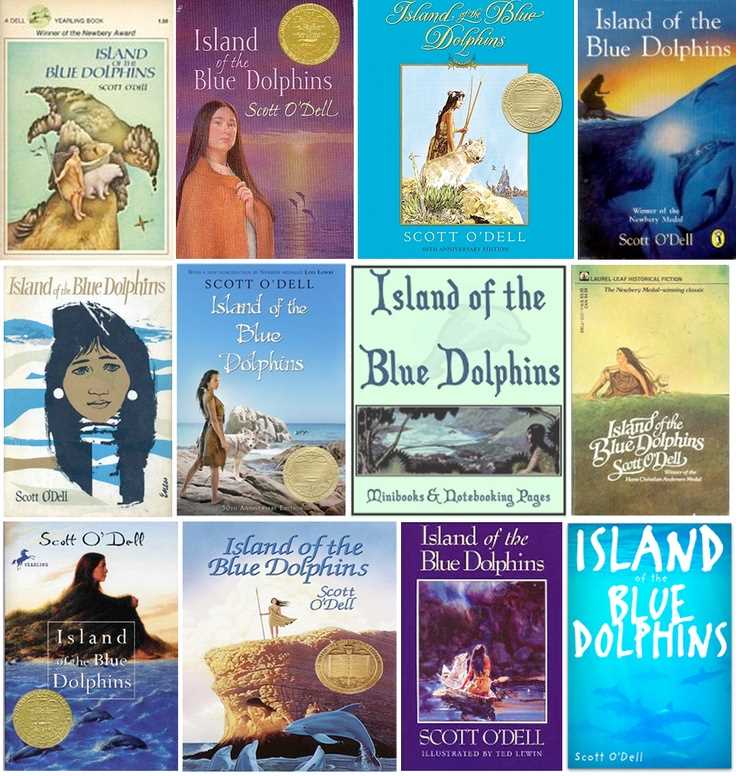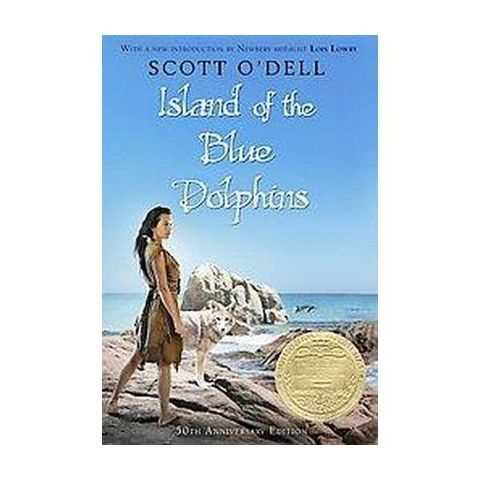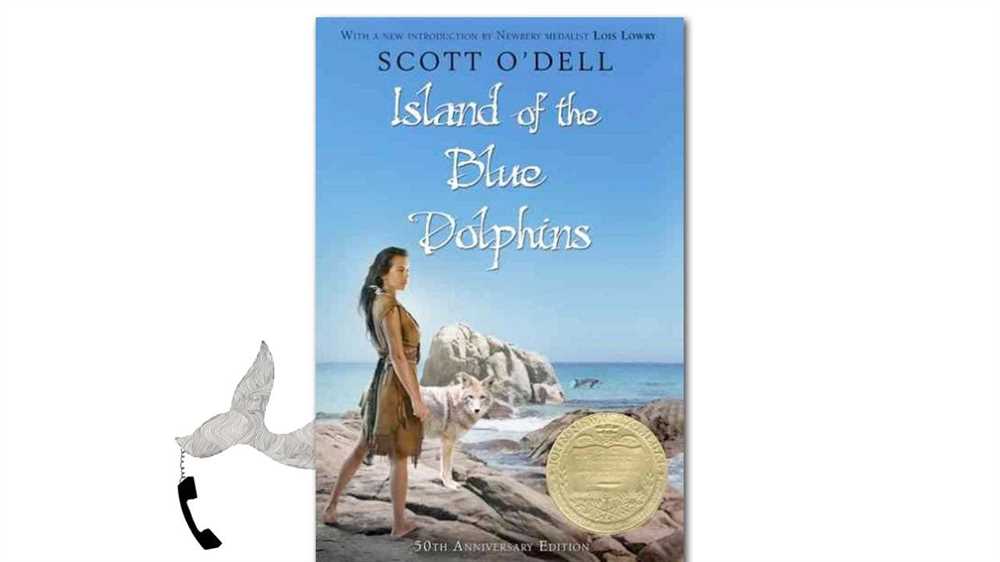
Curious about “The Island of the Blue Dolphins” by Scott O’Dell? Here are some frequently asked questions about this beloved novel, along with their answers.
Q: What is “The Island of the Blue Dolphins” about?
“The Island of the Blue Dolphins” is a historical fiction novel that tells the story of a young Native American girl named Karana, who is marooned on an island off the coast of Southern California. The book chronicles her fight for survival and her transformation into a strong and resilient individual.
Q: Who is the author of “The Island of the Blue Dolphins”?
“The Island of the Blue Dolphins” was written by Scott O’Dell, an American author known for his children’s and young adult novels. O’Dell was inspired by the true story of a Native American woman who lived alone on San Nicolas Island in the 19th century.
Q: Is “The Island of the Blue Dolphins” based on a true story?
Yes, “The Island of the Blue Dolphins” is based on the true story of a Native American woman named Juana Maria, also known as “The Lone Woman of San Nicolas Island.” She was left behind on the island in 1835 and lived there alone for 18 years until she was eventually discovered and brought to the mainland.
Q: What is the genre of “The Island of the Blue Dolphins”?
“The Island of the Blue Dolphins” is a combination of historical fiction and survival/adventure genres. It immerses readers in the world of Native American culture and explores themes of loneliness, resilience, and the power of nature.
Q: Why is “The Island of the Blue Dolphins” a popular book?
“The Island of the Blue Dolphins” has captivated readers for decades due to its compelling story, vivid descriptions, and relatable characters. The book delves into themes of isolation, friendship, and survival, allowing readers of all ages to connect with the universal struggles and triumphs of the human spirit.
Whether you’re a fan of historical fiction, adventure, or simply looking for an inspiring read, “The Island of the Blue Dolphins” is a must-read that will transport you to a unique and captivating world.
The Island of the Blue Dolphins: Questions and Answers
In “The Island of the Blue Dolphins,” a classic children’s novel written by Scott O’Dell, there are many questions that arise as we delve into the story. This article aims to answer some of the most frequently asked questions about the book and its themes.
1. What is the plot of “The Island of the Blue Dolphins”?
“The Island of the Blue Dolphins” tells the story of a young Native American girl named Karana, who is left alone on an island when her tribe is forced to evacuate. She must learn to survive in the harsh wilderness, facing challenges such as finding food, building shelter, and defending herself against wild animals.
2. Is “The Island of the Blue Dolphins” based on a true story?
Although the book is a work of fiction, it is loosely based on the true story of a Native American woman named Juana Maria. In the 19th century, Juana Maria was left behind on San Nicolas Island off the coast of California and lived there alone for nearly two decades before being discovered.
3. What are some key themes in “The Island of the Blue Dolphins”?
The novel explores themes of survival, loneliness, and the indomitable spirit of human beings. It also raises important questions about our relationship with nature and the impact of colonization on indigenous communities.
4. What lessons can we learn from “The Island of the Blue Dolphins”?
The book teaches us the importance of resilience, adaptability, and resourcefulness in the face of adversity. It also highlights the power of human connection, as Karana finds companionship with a wild dog named Rontu and learns to trust herself and others.
5. How does “The Island of the Blue Dolphins” inspire readers today?
The story of Karana’s survival and endurance resonates with readers of all ages, reminding us of the strength of the human spirit and the ability to overcome seemingly insurmountable challenges. It encourages us to appreciate the natural world and our interconnectedness with it.
- Overall, “The Island of the Blue Dolphins” is a captivating tale that sparks curiosity and reflection. Its timeless themes and memorable characters continue to captivate readers and inspire discussion even decades after its publication.
What is “The Island of the Blue Dolphins” about?

“The Island of the Blue Dolphins” is a novel written by Scott O’Dell. It tells the story of a young Native American girl named Karana, who finds herself stranded on an island in the Pacific Ocean. The story is based on the true story of Juana Maria, a Nicoleño Indian who lived alone on San Nicolas Island for 18 years.
The novel begins with Karana’s tribe, the Ghalas-at, being forced to abandon their island due to clashes with Russian fur hunters. In the chaos, Karana’s younger brother Ramo is left behind and she decides to stay with him. However, Ramo is killed by a pack of wild dogs, leaving Karana completely alone on the island.
Throughout the book, Karana learns to survive on her own, using her resourcefulness and the knowledge passed down from her family. She builds a shelter, hunts for food, and makes weapons to defend herself from dangers such as wild dogs and hostile tribes. Karana also befriends animals, such as a wild dog she calls Rontu, and forms a deep bond with them.
As the years go by, Karana experiences countless hardships and loneliness, but also finds joy and beauty in her solitude. She learns to appreciate the natural world around her and realizes her own strength and resilience. Eventually, Karana is rescued by a ship and leaves the island, but not before discovering her true identity and finding closure for the losses she suffered.
“The Island of the Blue Dolphins” is a tale of survival, resilience, and the indomitable spirit of a young girl. It explores themes of loneliness, connection with nature, and the importance of self-reliance. Through Karana’s journey, readers are taken on an emotional and captivating adventure that showcases the power of human determination and the ability to find strength in the most challenging situations.
A look into the plot and setting of the book
The plot of “The Island of the Blue Dolphins” revolves around the protagonist, a young Native American girl named Karana, who finds herself stranded alone on an island off the coast of California. The story is based on the true story of a woman named Juana María, who lived alone on San Nicolas Island for 18 years in the 19th century.
The book begins with Karana’s people, the Nicoleños, being forced to leave the island by Russian fur hunters. However, Karana accidentally gets left behind and is left to fend for herself. The plot follows her struggles and triumphs as she learns to survive in her solitary existence.
The setting of the book plays a crucial role in the story. The island itself becomes a character, as it becomes both Karana’s home and her constant companion. The author vividly describes the landscape and wildlife of the island, making the setting feel alive and dynamic.
The island is filled with various animals, including sea otters, seals, and dolphins, which Karana forms a bond with, giving the book its title. The setting also poses challenges for Karana, as she must learn to navigate the rugged terrain, find food and shelter, and protect herself from the elements.
Overall, the plot and setting of “The Island of the Blue Dolphins” combine to create a captivating story of survival and resilience. Karana’s journey on the island provides readers with a unique perspective on the power of nature and the strength of the human spirit.
Who is the main character in “The Island of the Blue Dolphins”?
In “The Island of the Blue Dolphins”, the main character is a young Native American girl named Karana. She belongs to the Nicoleño tribe, who lived peacefully on their island until a group of Russian otter hunters arrives. When the Nicoleños decide to leave the island, Karana is left behind by accident and must survive on her own.
Karana becomes the sole inhabitant of the island and is faced with many challenges and obstacles. She must learn to find food and water, build shelter, and defend herself against wild animals. Despite the hardships, Karana becomes resilient and resourceful, adapting to her new solitary life.
Throughout the novel, Karana’s character develops as she learns to navigate the island and its dangers. She forms a close bond with the animals and learns to communicate with them, finding companionship in her surroundings. Karana also demonstrates determination and courage as she faces constant threats and fights to survive.
The character of Karana in “The Island of the Blue Dolphins” showcases the strength, resilience, and survival instincts of an individual living in isolation. Her story serves as a testament to the human spirit and the ability to adapt and overcome in challenging circumstances.
Introducing the brave and resourceful Karana
Karana, the protagonist in “The Island of the Blue Dolphins” by Scott O’Dell, is a young Native American girl who demonstrates incredible bravery and resourcefulness while living alone on an island. When her tribe is forced to leave the island, Karana chooses to stay behind to search for her younger brother who was accidentally left behind during the evacuation. This decision showcases her unwavering determination and love for her family.
Throughout the novel, Karana shows her resourcefulness by utilizing the island’s natural resources to survive. She builds a shelter using whale ribs and structures her home in a way that enables her to stay protected from the elements. She hunts and fishes for her food, making use of her well-developed skills in tracking and fishing. Karana also weaves baskets and garments from reeds and grasses, demonstrating her ability to adapt and create tools necessary for her day-to-day life.
Not only is Karana physically strong and resourceful, but she also possesses a resilient spirit that allows her to overcome numerous challenges. She faces continuous threats from wild animals and encounters a group of hostile Aleut hunters. Despite these dangers, Karana remains steadfast and finds ways to protect herself and her belongings. She also develops a deep appreciation for the natural world around her, finding solace and companionship in the animals she encounters.
In addition to her physical prowess and resourcefulness, Karana’s character also showcases her emotional growth and resilience. She experiences loneliness and sorrow, but she never loses hope or gives up on her quest to survive and reunite with her brother. Karana’s ability to maintain her sense of self amidst isolation is a testament to her inner strength and determination.
Through the character of Karana, Scott O’Dell presents a powerful portrayal of a young girl who demonstrates bravery, resourcefulness, and resilience in the face of adversity. Karana’s story serves as an inspiration, reminding readers of the indomitable spirit that lies within us all.
How does Karana survive on the island?
Karana, the protagonist of “The Island of the Blue Dolphins,” is a resourceful and resilient young girl who survives on the island by utilizing her skills and adapting to her environment. One of the key ways she survives is through her ability to hunt and gather food.
Karana learns to fish using a spear made from a sharpened stick, which allows her to catch fish and other marine creatures in the surrounding waters. She also learns to set traps to catch birds and other small animals for food. With her knowledge of the island’s plants, she is able to gather edible berries, nuts, and roots, providing her with a varied and sustainable diet.
In addition to hunting and gathering, Karana is skilled in creating tools and shelter. She uses bones, shells, and driftwood to fashion tools such as knives and bowls, enabling her to complete necessary tasks like cooking and storing food. Karana builds a sturdy shelter using branches, leaves, and grass, which provides her with protection against the elements and a sense of security.
Furthermore, Karana’s deep connection with nature helps her survive on the island. She learns to observe the behaviors of animals and read the signs of the changing seasons, allowing her to make informed decisions about when and where to find food and resources. She develops a strong bond with some of the island’s animals, such as Rontu, a wild dog, who becomes her loyal companion and protector. This connection with nature provides Karana with companionship, emotional support, and a sense of belonging in her isolation.
In summary, Karana survives on the island through her hunting and gathering skills, her ability to create tools and shelter, and her connection with nature. Her resourcefulness, adaptability, and resilience enable her to overcome the challenges of living alone on the island and carve out a life for herself in this harsh environment.
Exploring Karana’s strategies for survival
In the novel “The Island of the Blue Dolphins” by Scott O’Dell, the protagonist Karana faces numerous challenges in her quest for survival on an isolated island. Throughout her journey, she employs various strategies to overcome these obstacles and ensure her own survival.
Self-sufficiency:
One of Karana’s key strategies for survival is her ability to become self-sufficient. After being left alone on the island, she quickly learns to rely on herself for food, shelter, and protection. She adapts to her surroundings by fashioning tools and weapons from the resources available on the island, such as rocks and bones. Karana also learns to hunt and fish, providing herself with a consistent source of food.
Observation and Adaptation:
Karana’s survival is also greatly aided by her keen observation skills and ability to adapt. She closely observes the behavior of animals on the island, such as birds and otters, and learns from their methods of survival. By studying their habits and behavior, she is able to improve her own techniques for hunting and fishing. Additionally, Karana adapts to the changing seasons and environmental conditions of the island, as she learns to withstand extreme weather and cultivate crops to sustain herself.
Resourcefulness:

Resourcefulness is another important strategy employed by Karana. She utilizes every available resource on the island, making use of materials like wood, shells, and reeds to construct her shelter and create tools. Karana’s resourcefulness allows her to make the most out of limited resources, ensuring her survival in the harsh environment.
Perseverance and Determination:
Above all, Karana’s unwavering perseverance and determination play a vital role in her survival. Despite facing numerous setbacks and challenges, including the constant threat of danger, she never gives up. Karana’s resilience allows her to endure the hardships of her solitary life on the island and remain focused on her ultimate goal of survival.
Overall, Karana’s survival strategies in “The Island of the Blue Dolphins” demonstrate her resourcefulness, adaptability, and sheer determination. The novel serves as a testament to the strength of the human spirit and the lengths one can go to ensure their own survival.